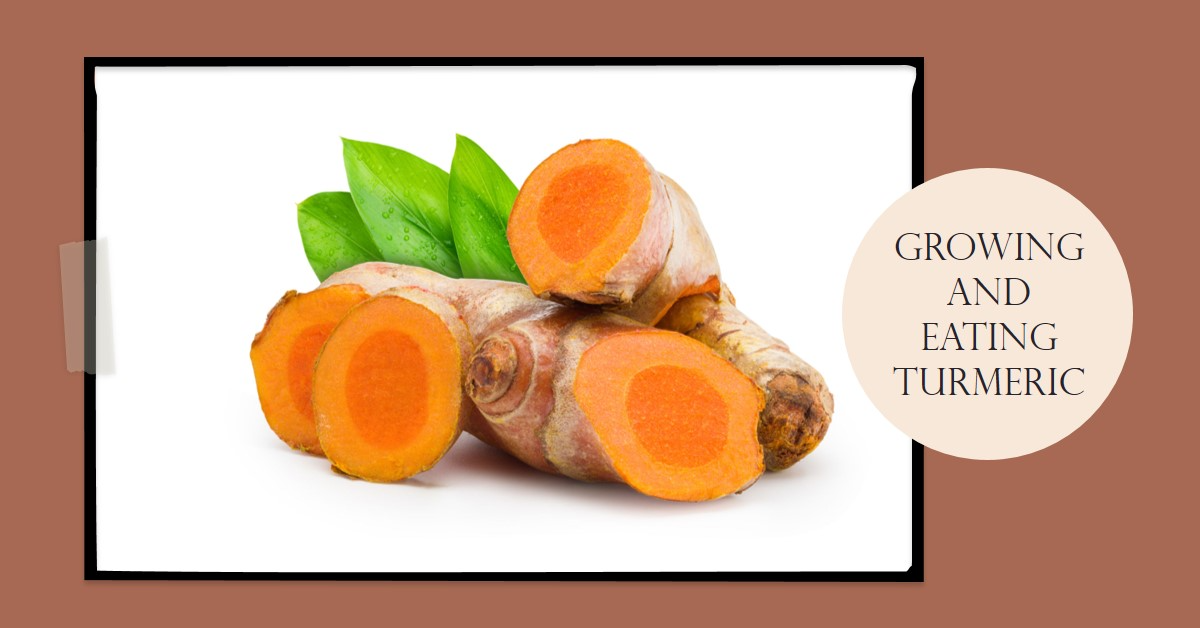Explore the wonders of Turmeric (Curcuma longa), a herbaceous perennial plant that not only adds beauty to your garden but also offers a plethora of uses and health benefits. Join us as we delve into its description, versatile applications, growing details, and delightful ways to incorporate this vibrant spice into your culinary creations. Let’s unlock the secrets of this ancient treasure from Southern Asia.
Description and Ornamental Appeal:
Turmeric is a captivating herbaceous perennial plant belonging to the ginger family. It can reach up to 1 meter in height and boasts highly branched, aromatic rhizomes that range in color from yellow to orange. At the base of the plant, these cylindrical rhizomes hide beneath the soil, ready to be harvested. Given the opportunity to grow undisturbed for a year, Turmeric will reward you with stunning pink flowers surrounded by lush, wide green leaves. The sheer beauty of its flowers alone makes Turmeric a worthy addition to any garden.
Versatile Uses and Functions:
The harvested rhizomes of Turmeric are typically boiled and sun-dried for 7-8 days, but they can also be used fresh. Apart from its culinary uses, Turmeric serves as a natural yellow food dye, replacing artificial additives like tetrazine. The leaves of this plant are also utilized by wrapping foods for cooking, imparting a delicious Turmeric flavor. Beyond its practical applications, Turmeric features beautiful foliage and flowers, making it an excellent ornamental feature in subtropical gardens. It provides shelter and shade to more delicate, smaller plants and contributes to the overall aesthetics of your garden. Not only is Turmeric versatile, but it also offers both edible and medicinal benefits.
Nutritional Value and Health Benefits:
The active ingredient in Turmeric, curcumin, is believed to inhibit an enzyme responsible for converting environmental toxins into carcinogens within the body. Moreover, curcumin aids in the digestion of fats and sugars and helps alleviate inflammation in the digestive system. When consumed with black pepper, which contains piperine, the absorption and effects of Turmeric are dramatically increased. This combination unlocks the full potential of Turmeric’s health benefits. Remarkably, Turmeric has been recorded as being used as early as 600 BC, showcasing its enduring value.
Growing Details and Care:
To grow Turmeric, plant small rhizomes (setts) with one or two buds, burying them 5-7 cm deep in a ridge or mound of soil directly in your garden. Space the rhizomes 30-45 cm apart to allow ample room for growth. Harvesting typically takes place around 9-10 months after planting, usually in winter when the lower leaves turn yellow or dry out and fall over. Clumps of Turmeric should be divided every 3-4 years, with fresh pieces replanted to ensure a continuous supply. Store some rhizomes to replant in the following spring or summer for a thriving Turmeric garden.
Best Time to Grow:
The ideal time to plant Turmeric is in September or October when the soil is warm and conditions are favorable for its growth.
Soil, Sun, and Water Requirements:
Turmeric adapts well to various soil types, performing best in loose, dark, and fertile soil. It can thrive in both full sun and dense shade, although heavy shade may reduce the yield. Ensure the soil is well-drained but consistently moist, as Turmeric dislikes waterlogging. This vibrant spice is ideal for locations that receive 1000-2000mm of rain annually or require supplementary irrigation.
Culinary Applications and Delightful Consumption:
Turmeric possesses a distinctive earthy flavor with slight bitterness and a mildly hot peppery kick. Although commonly used in savory dishes, it also finds its way into select sweet creations. The leaves of Turmeric can be employed to wrap food for cooking, infusing the dish with its delightful aroma. Apart from its dried, powdered form, Turmeric can be used fresh, much like ginger. Grate and cook it with onions before adding other vegetables for a flavor-packed base. Turmeric is a staple in Indian curries, rice dishes, and vegetarian recipes. Large chunks of soft Turmeric make delightful pickles, and its vibrant color enhances the flavors of meals. Create vibrant yellow rice by adding one teaspoon of Turmeric to one cup of raw rice. You can even enjoy Turmeric as a tea or in the form of Jamu, a traditional medicinal drink.
Radiant Color, Distinctive Flavor
Turmeric, with its radiant color, distinctive flavor, and numerous health benefits, is a prized addition to your organic garden. From its stunning appearance to its versatile uses in the kitchen, Turmeric offers a wealth of culinary possibilities and medicinal properties. By growing Turmeric in your garden, you can experience the joy of harvesting your own vibrant rhizomes and infusing your dishes with its unique flavors. Embrace the ancient wisdom of Turmeric and savor its rich heritage. Happy gardening and culinary exploration!
Stay tuned for more informative articles on OrganicMotion, your go-to destination for all things organic gardening.
